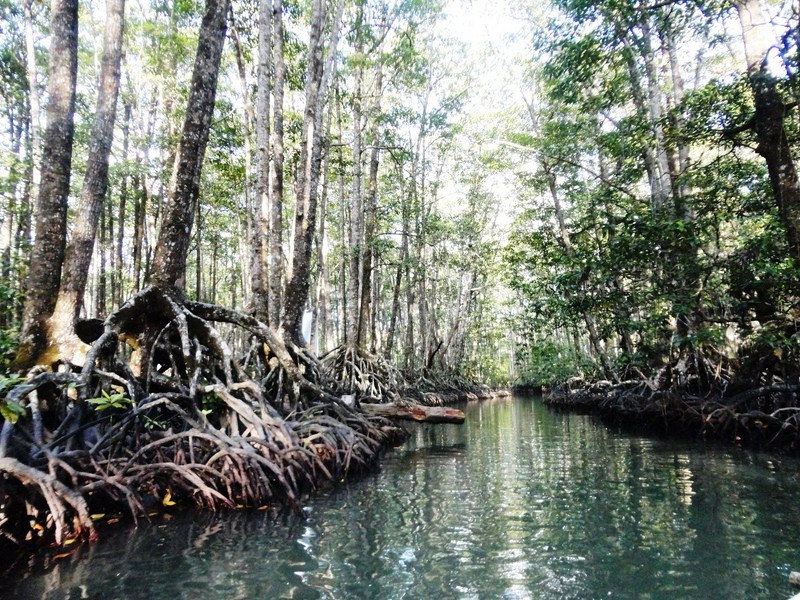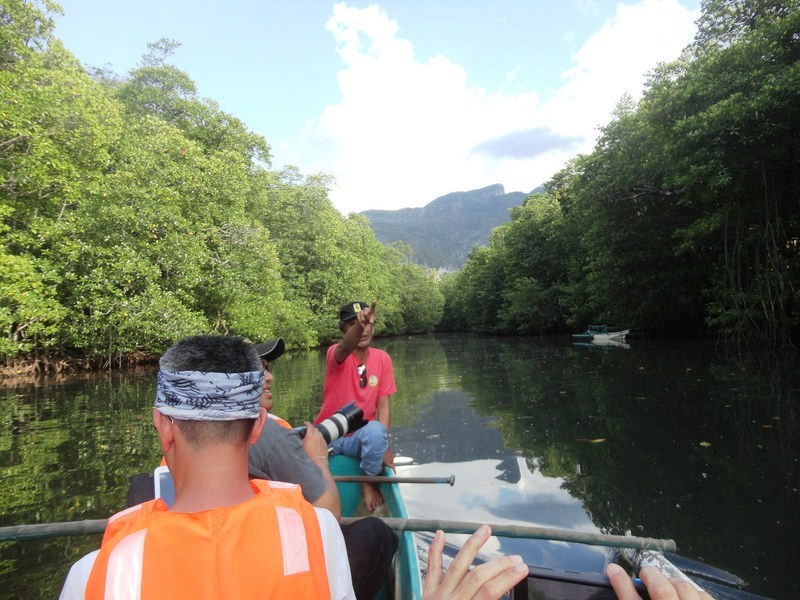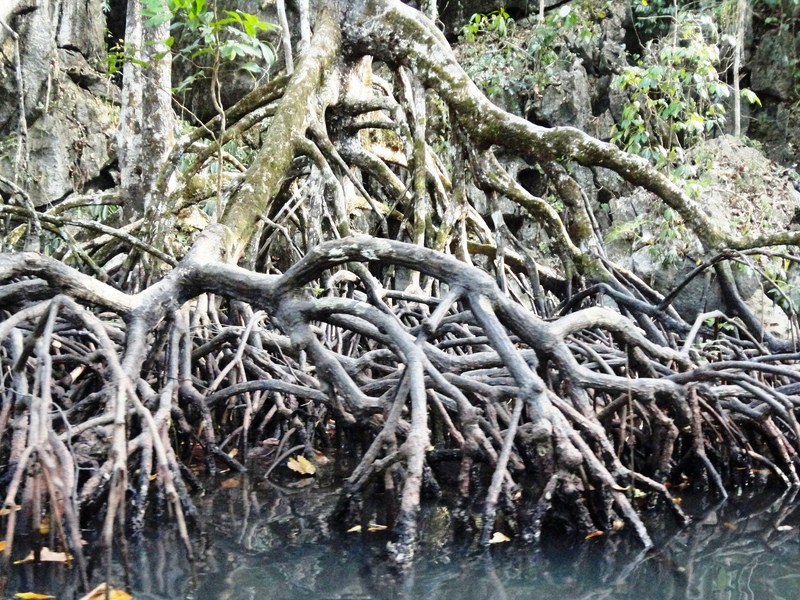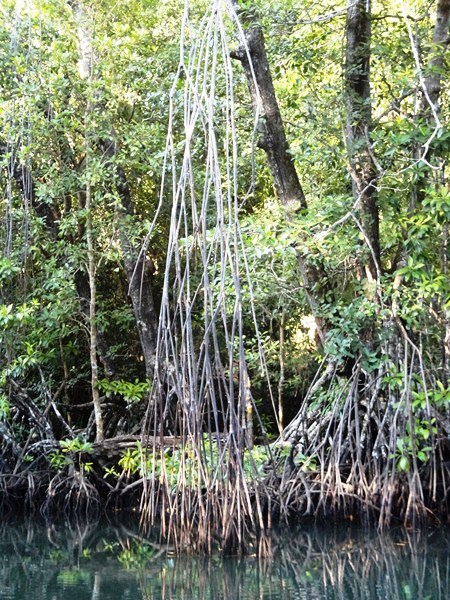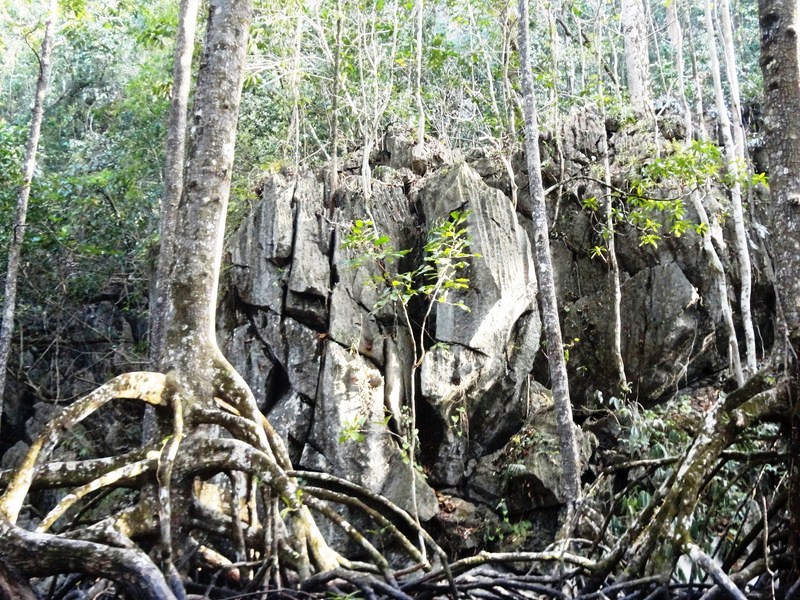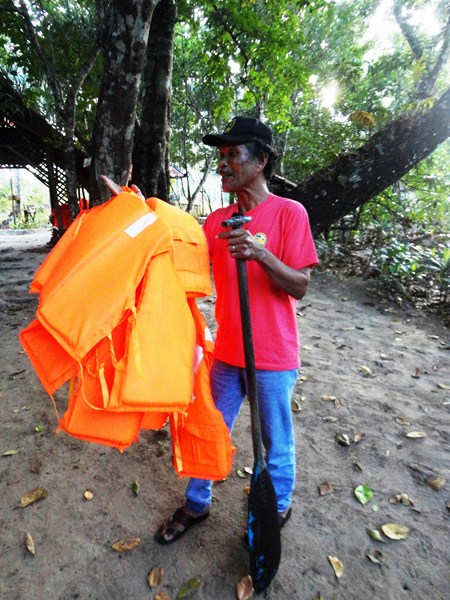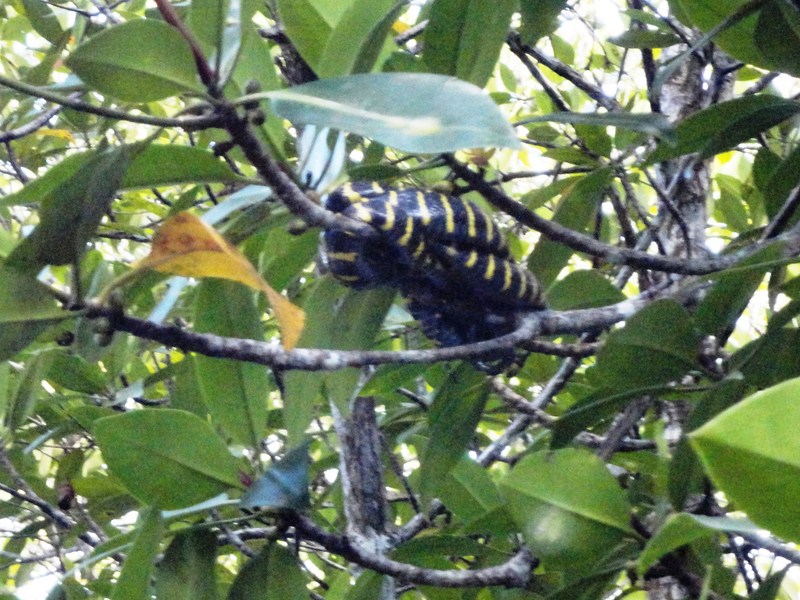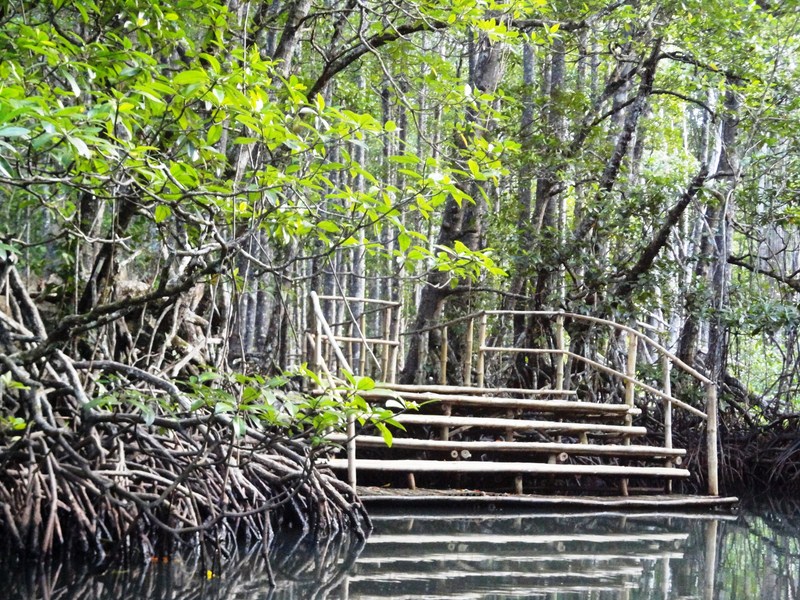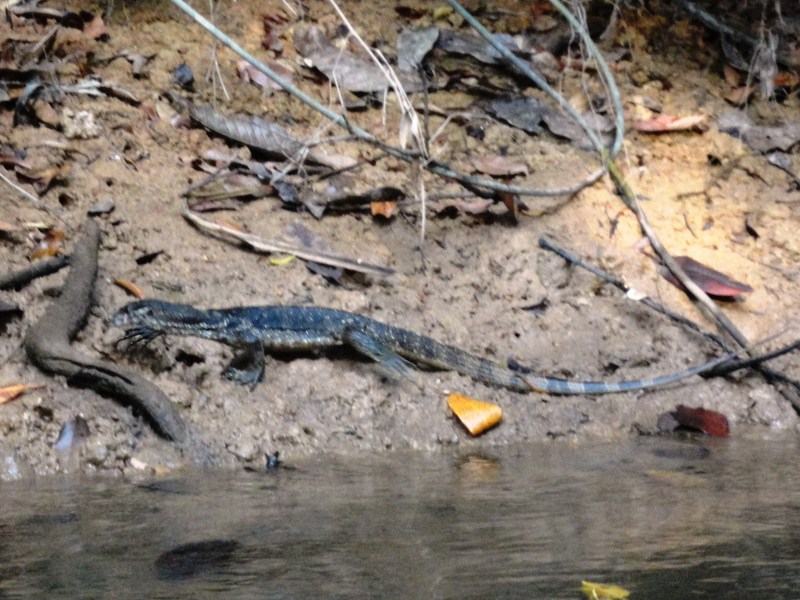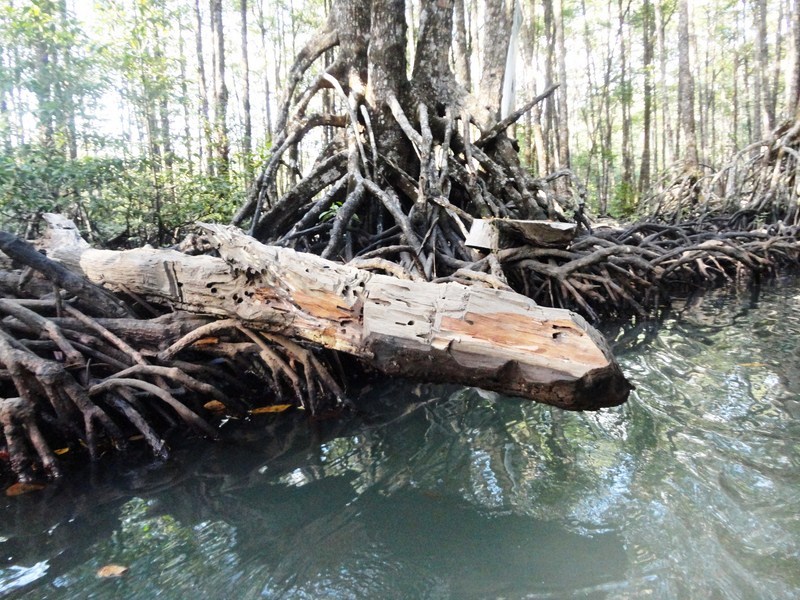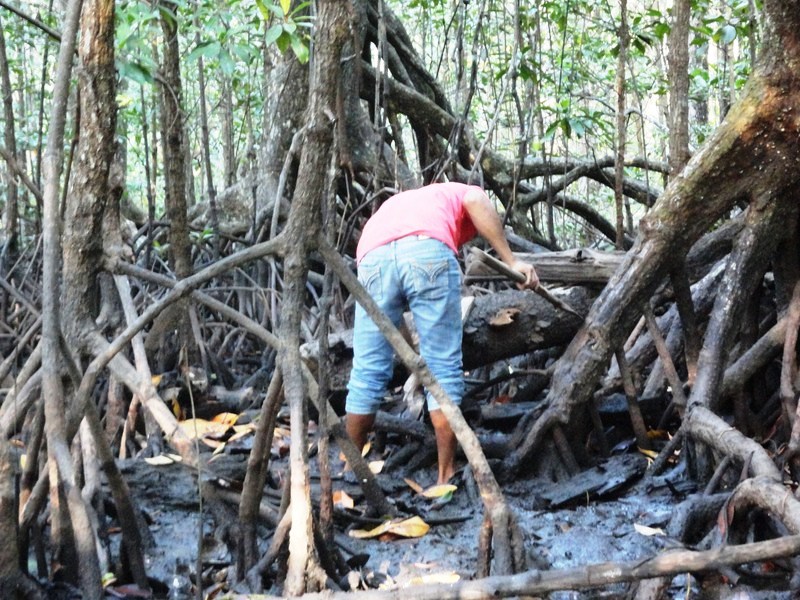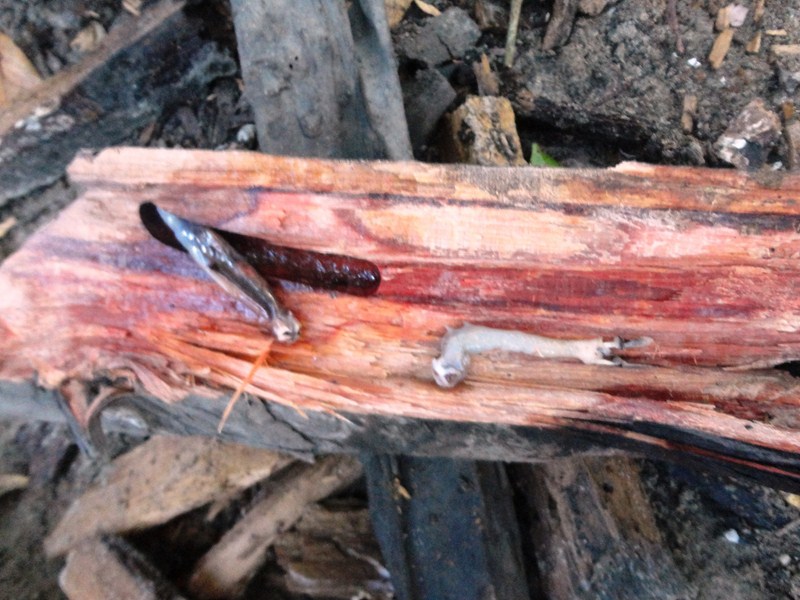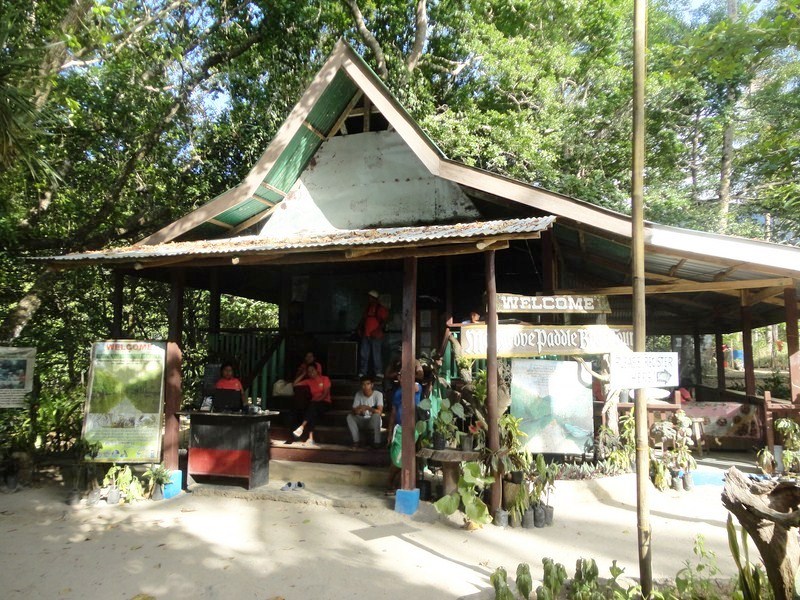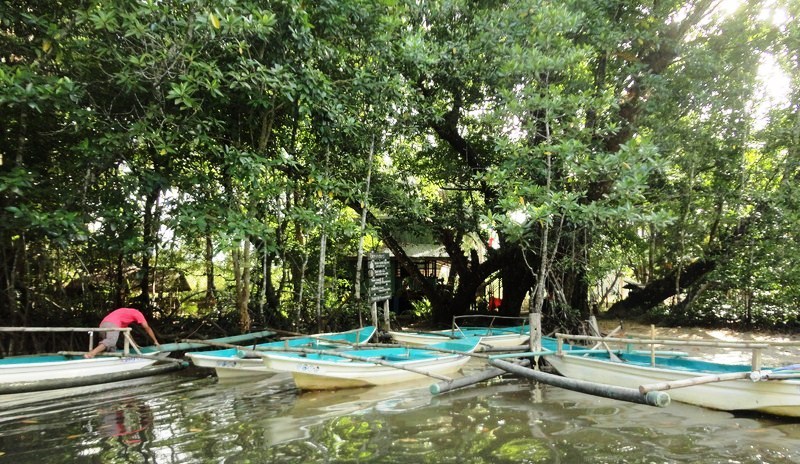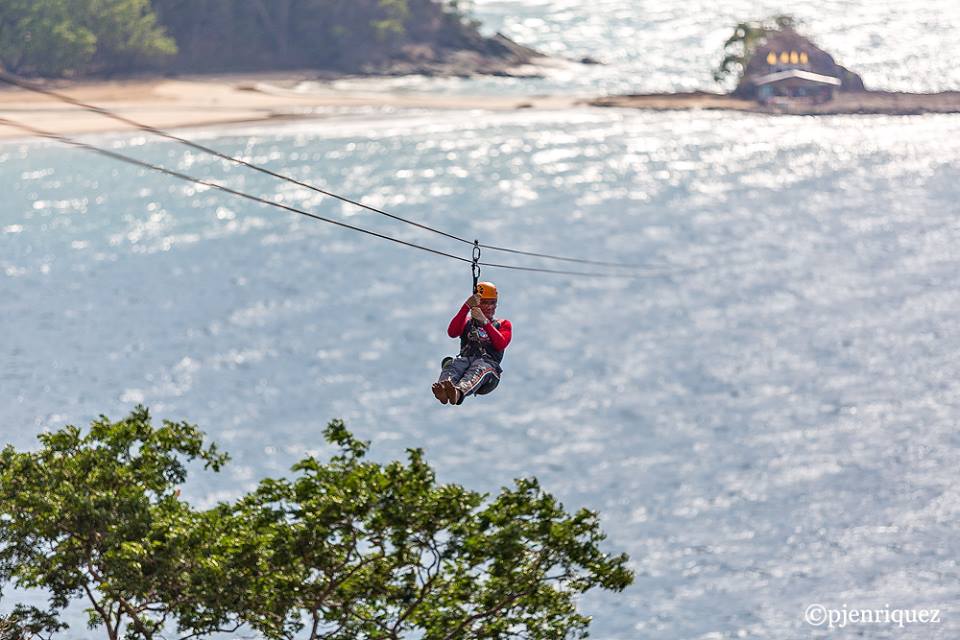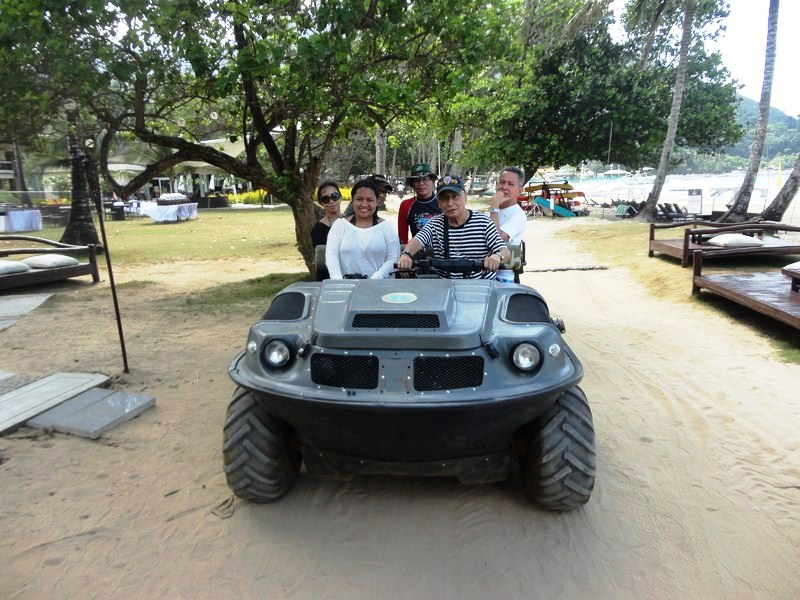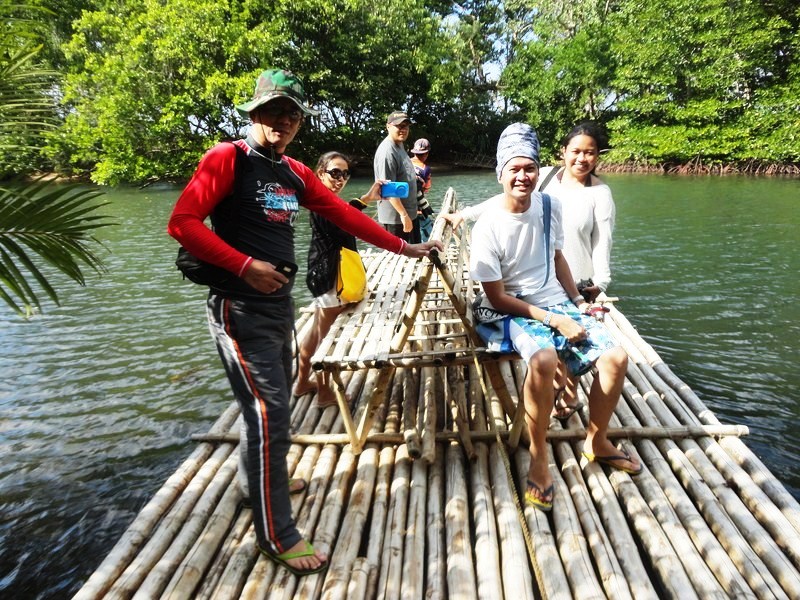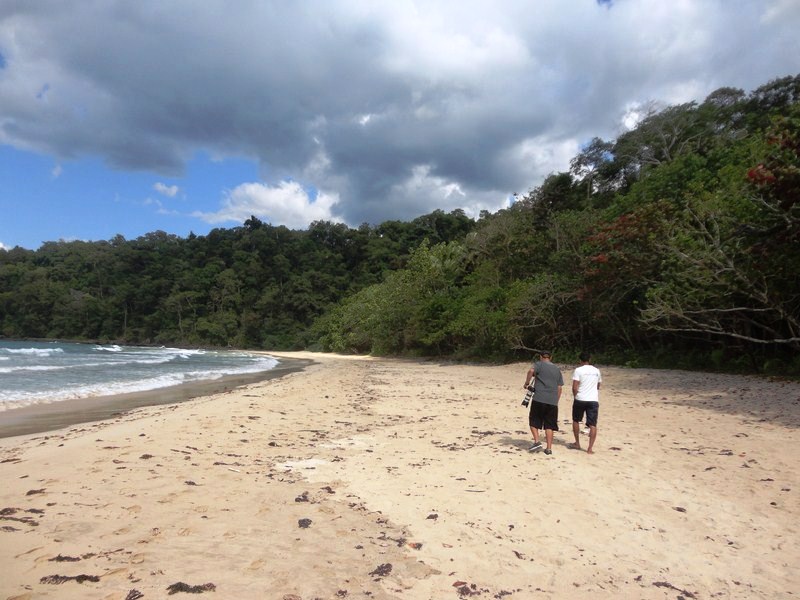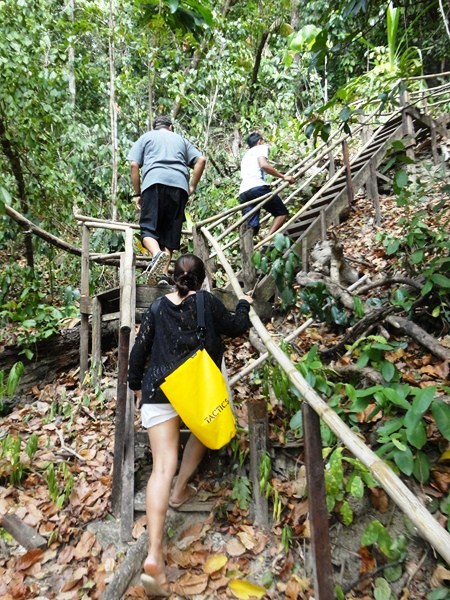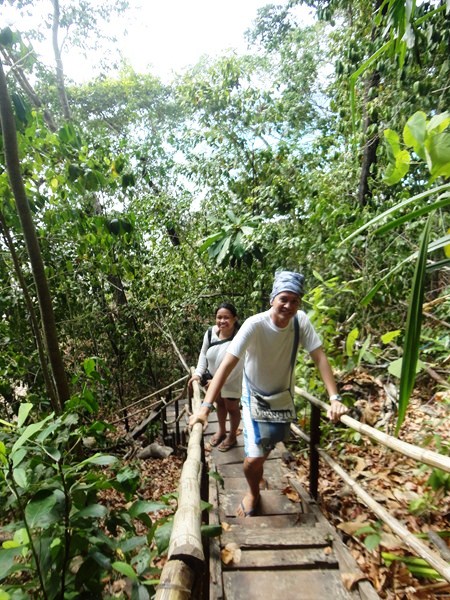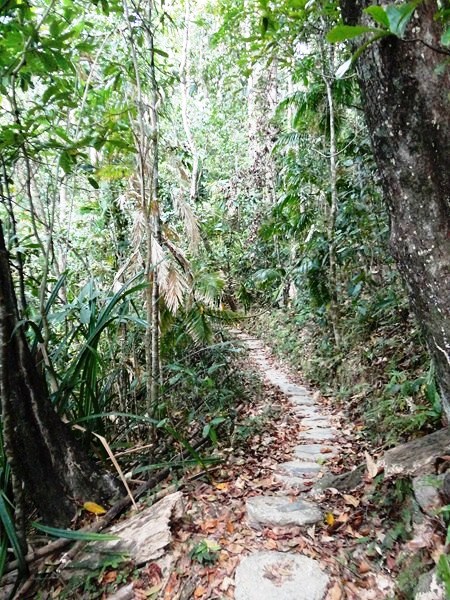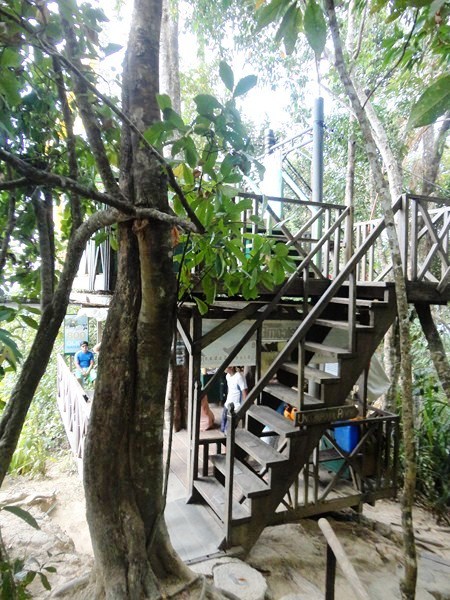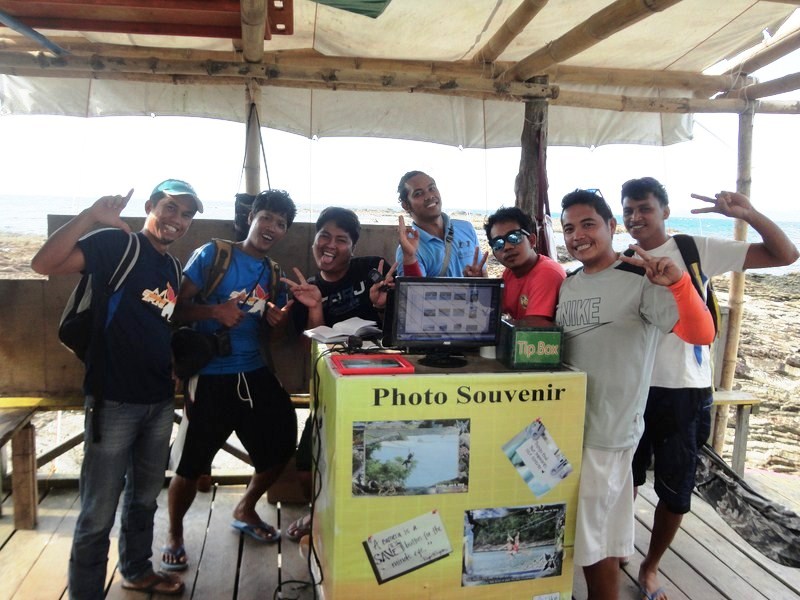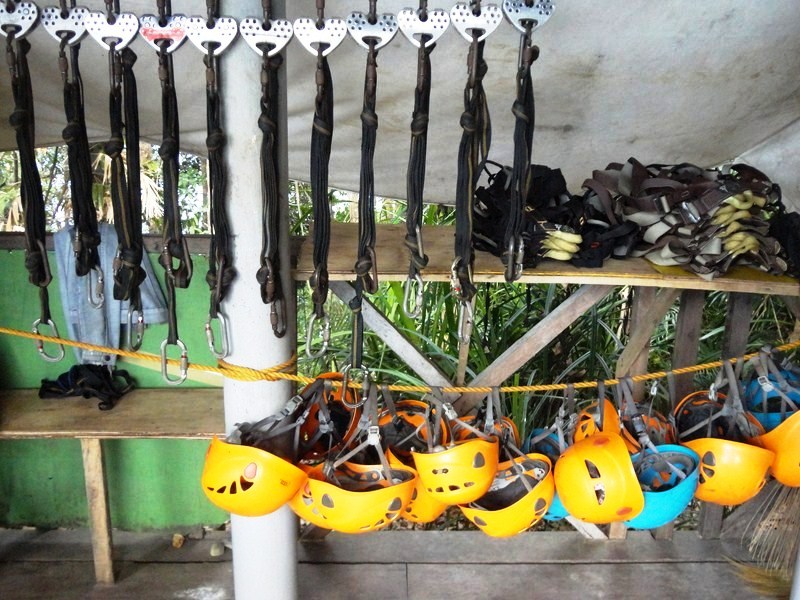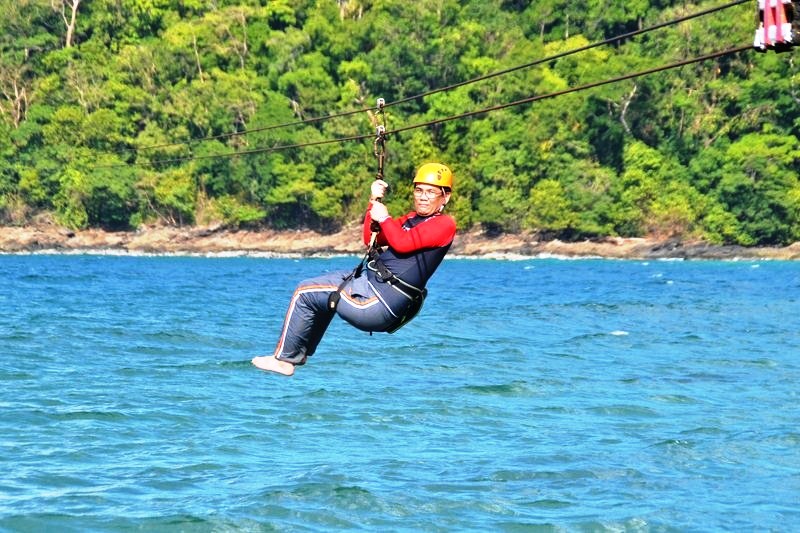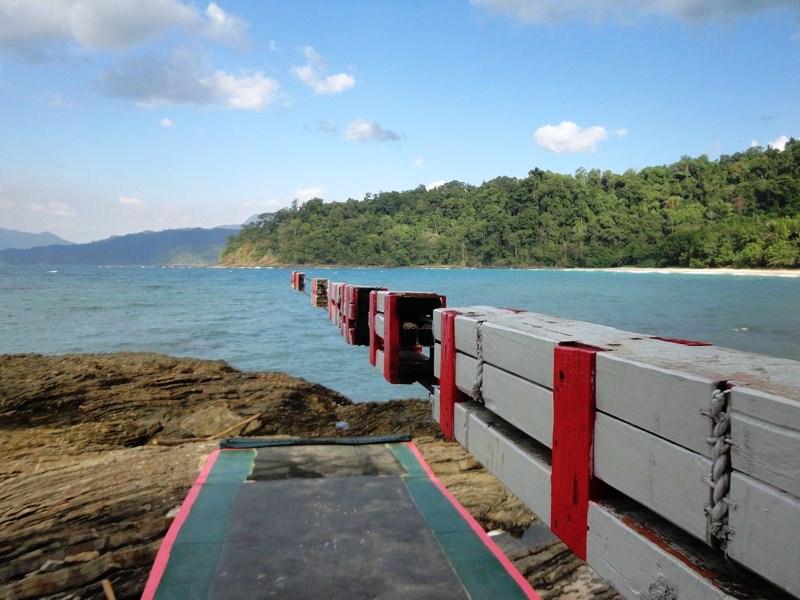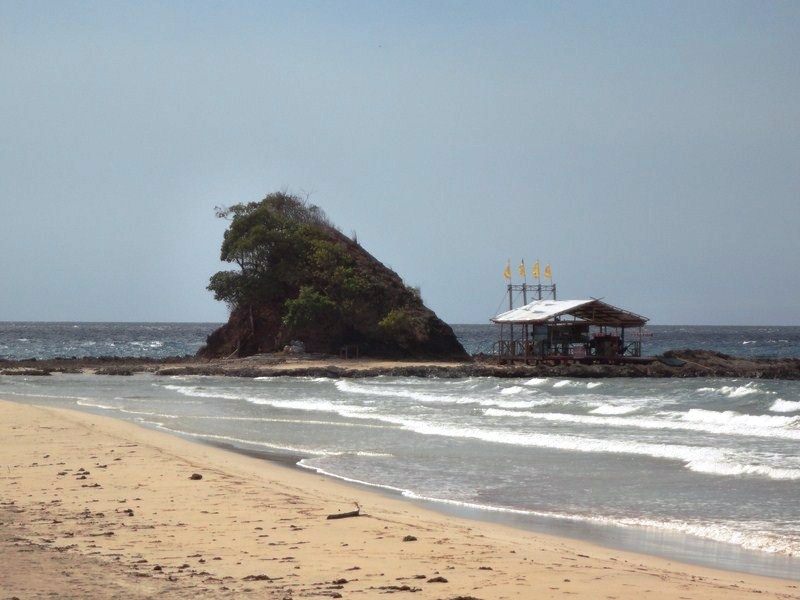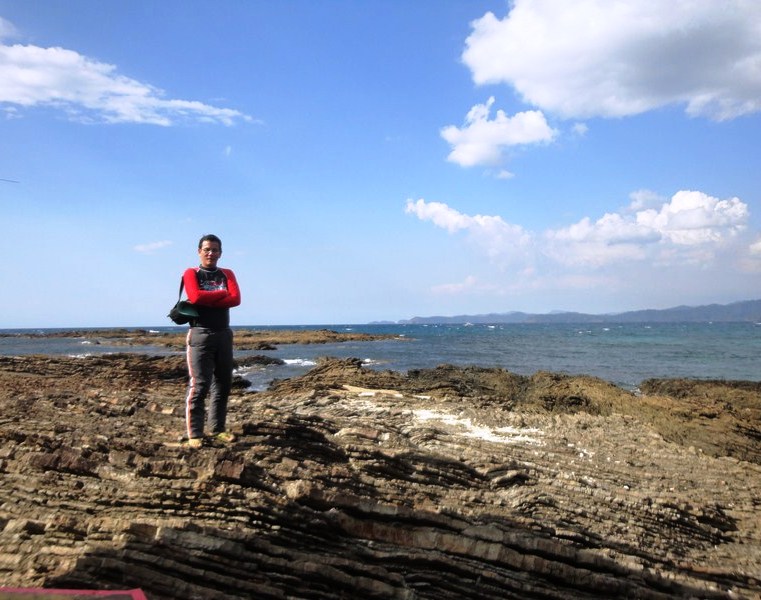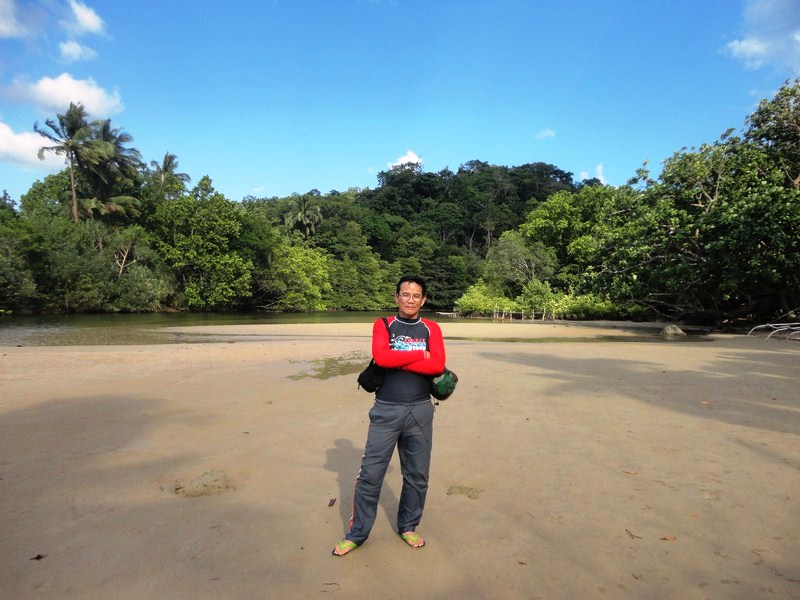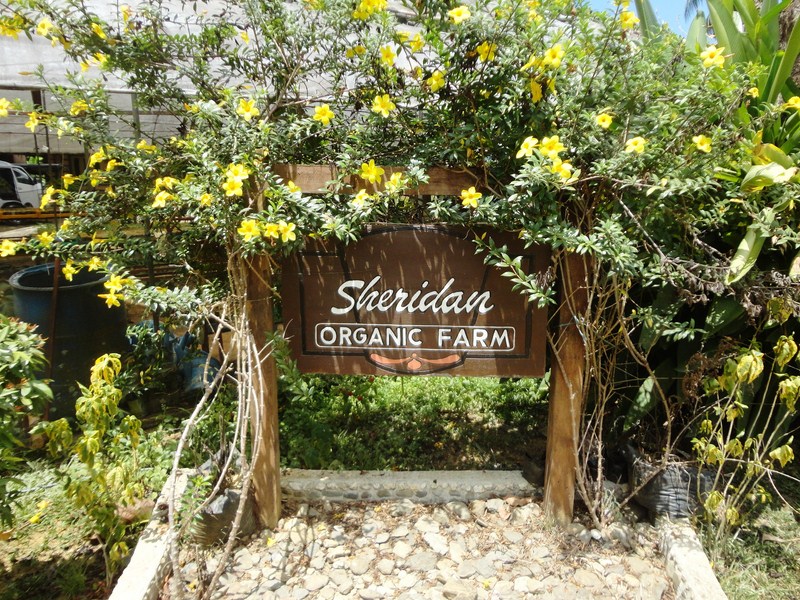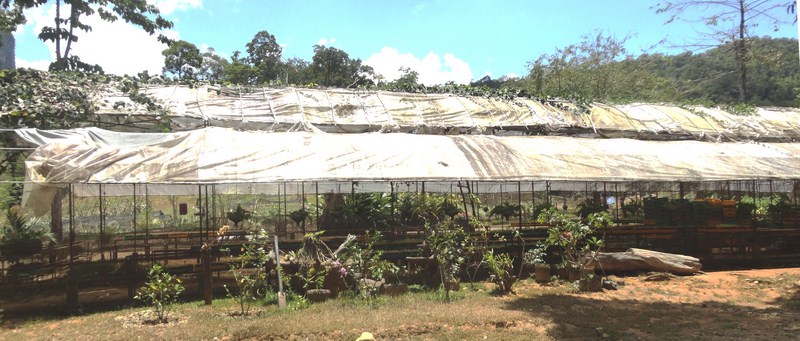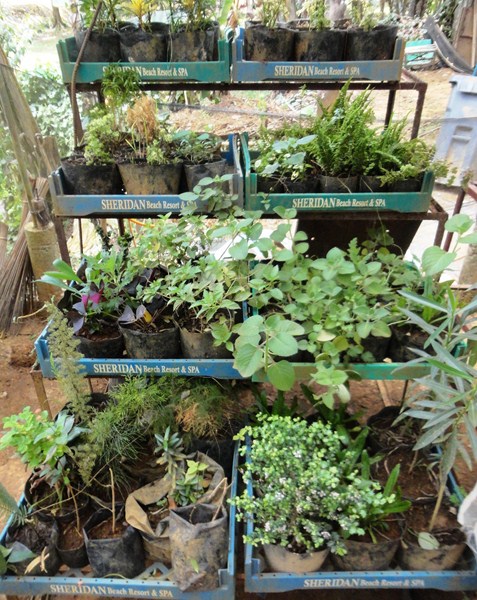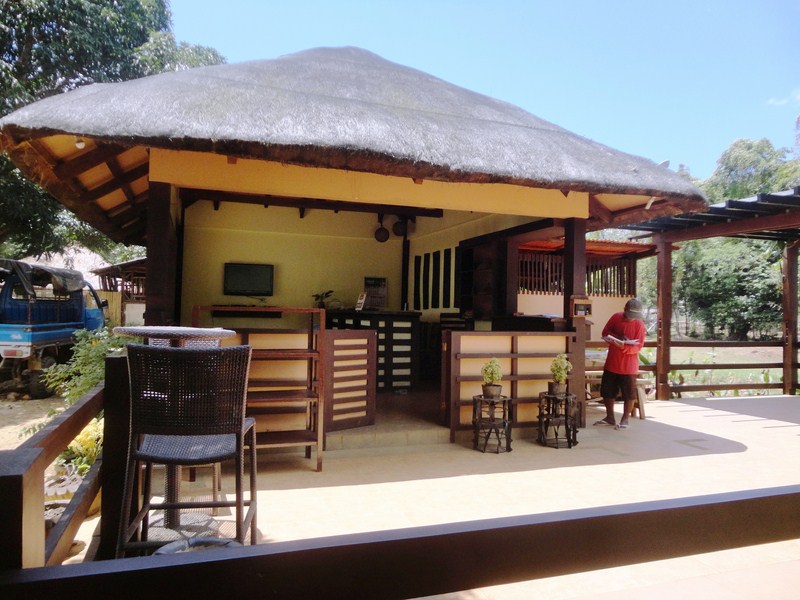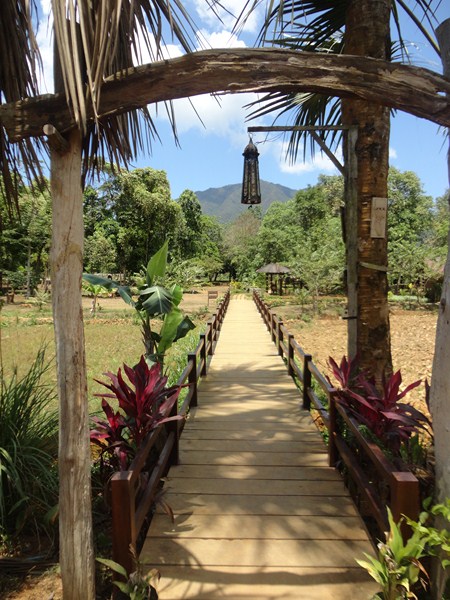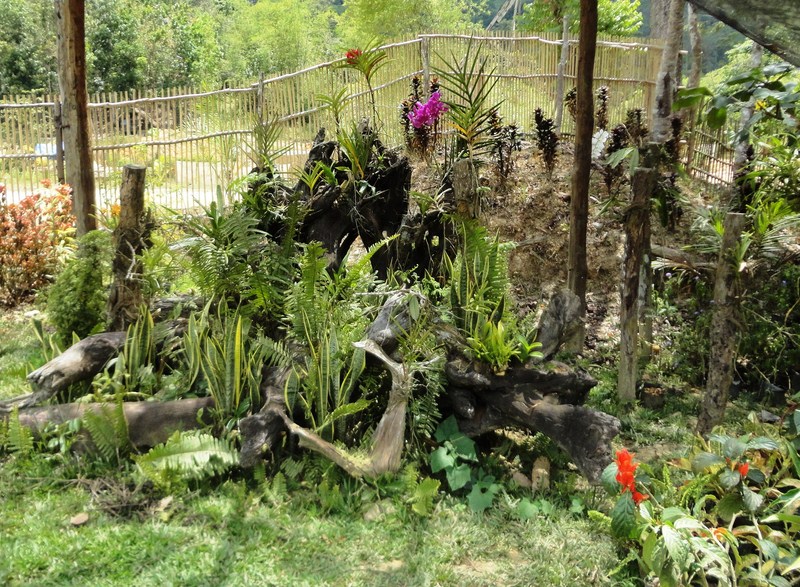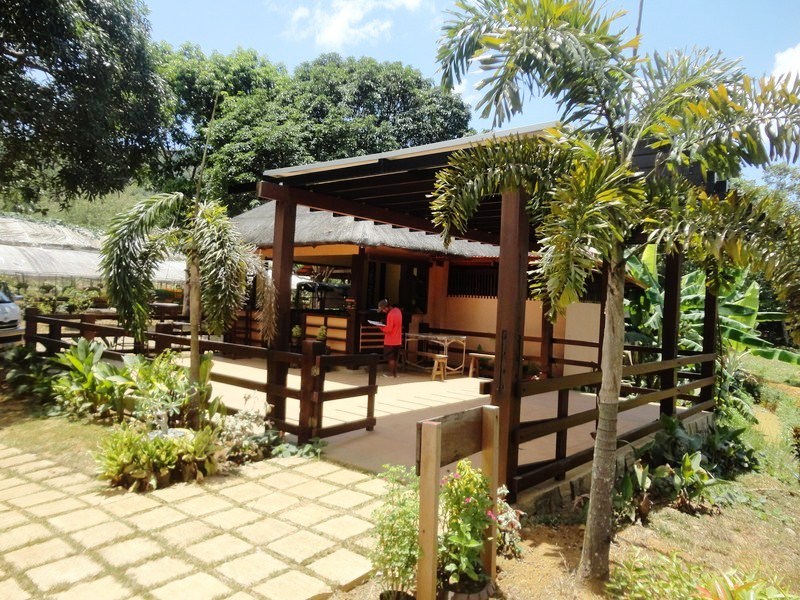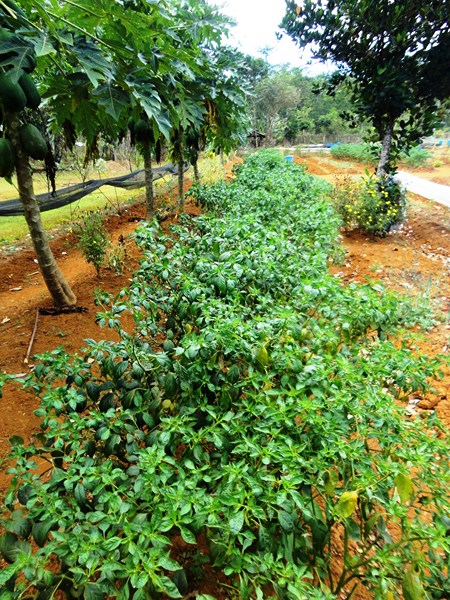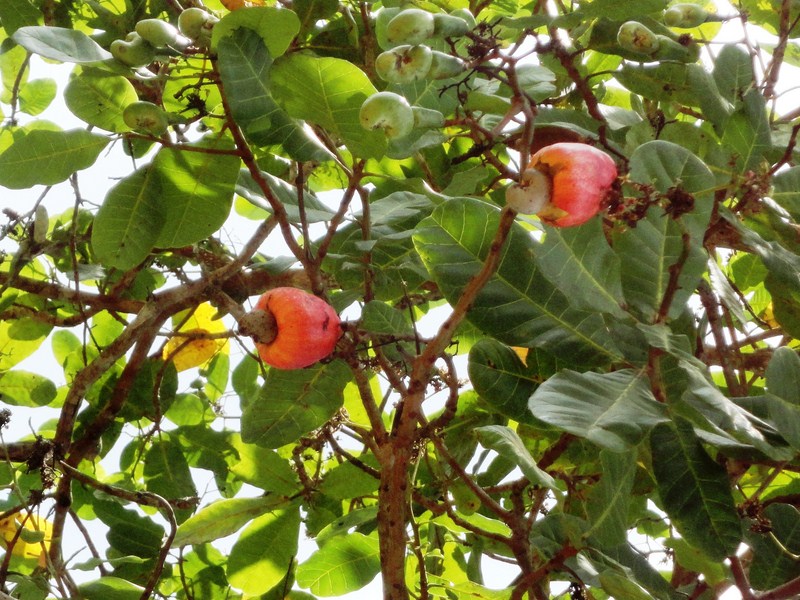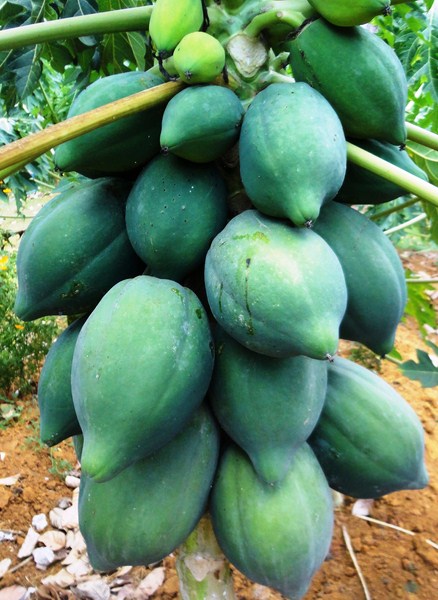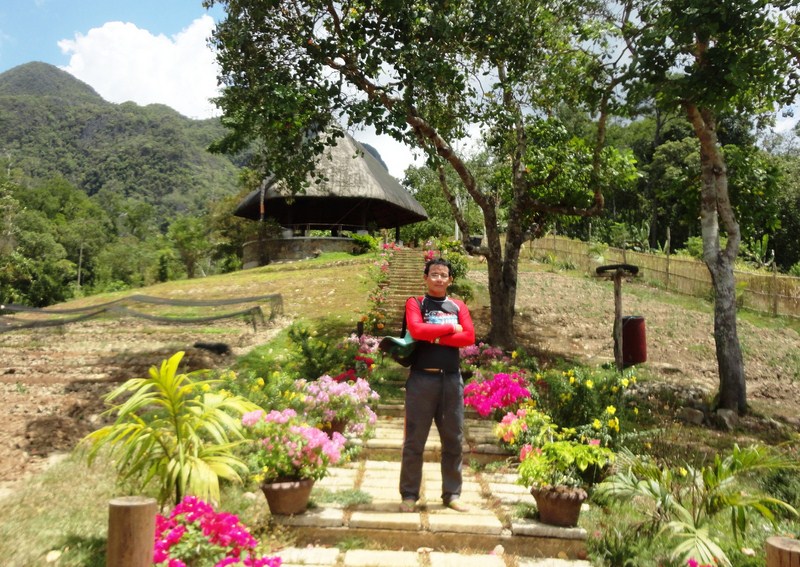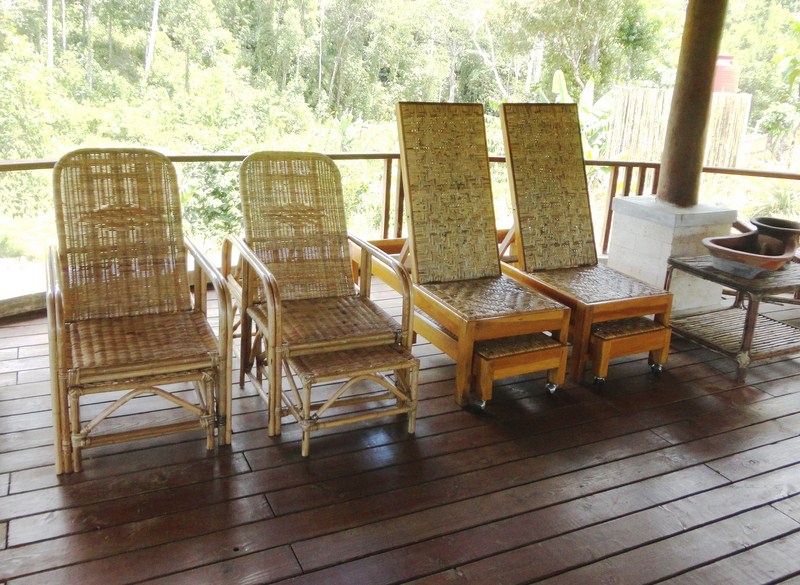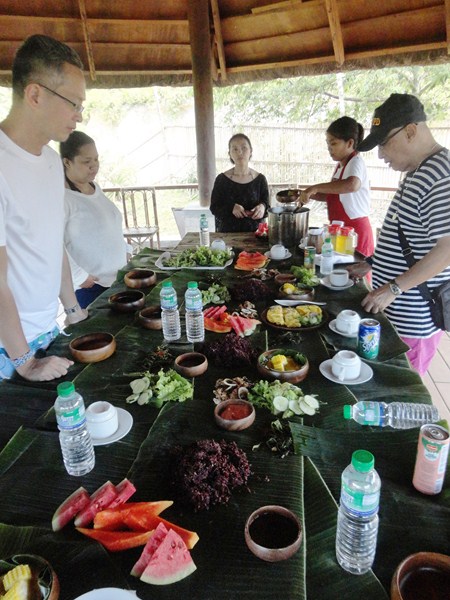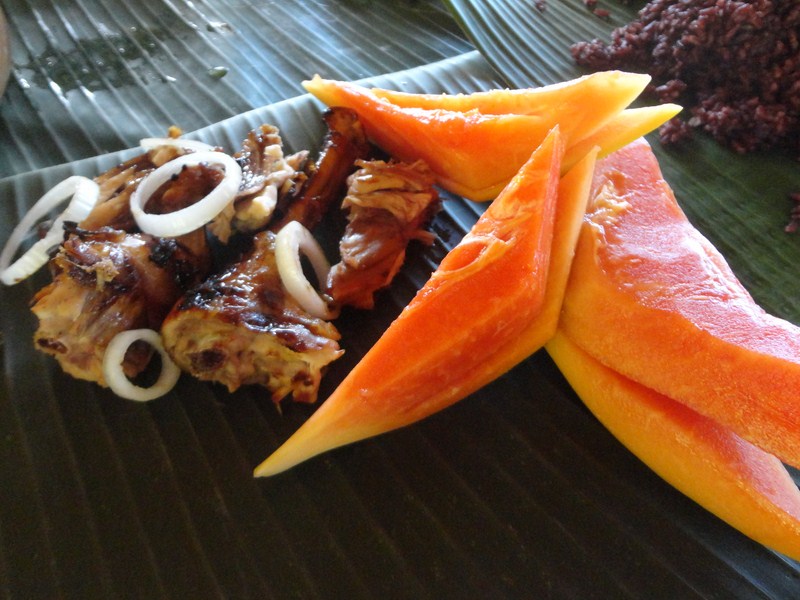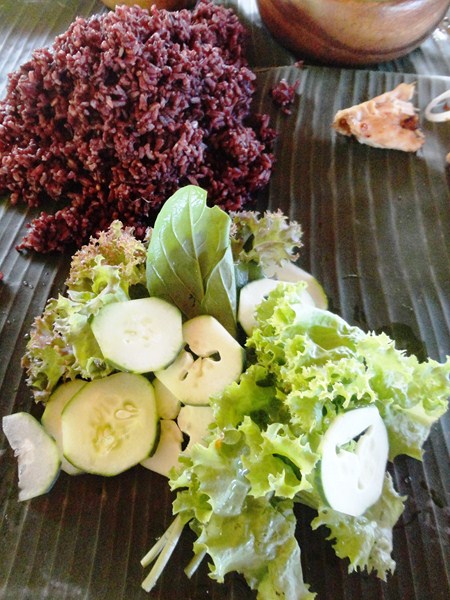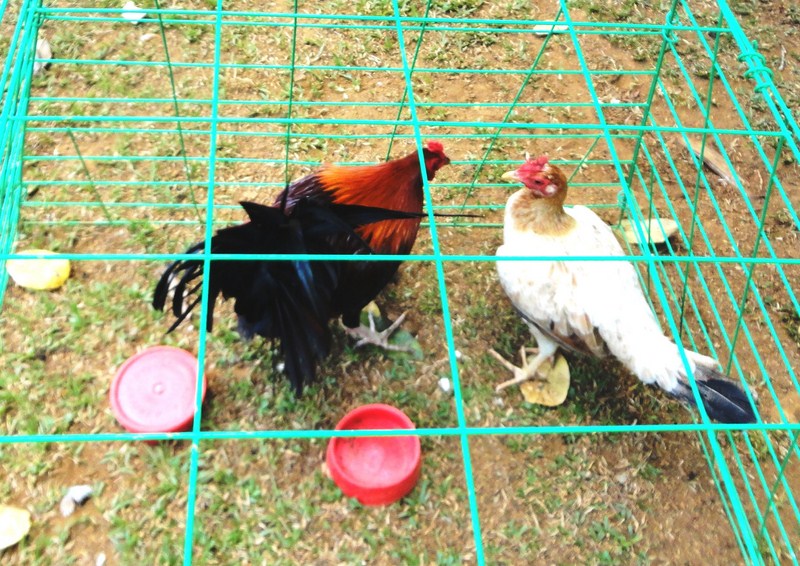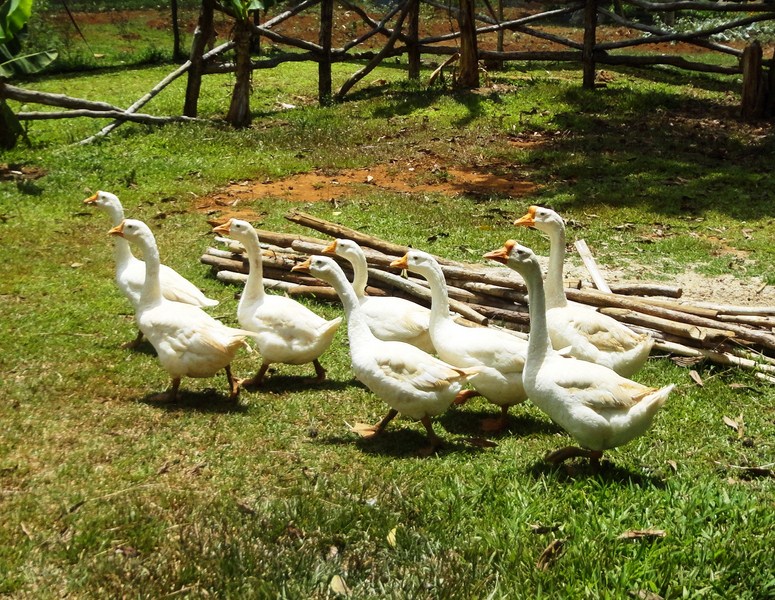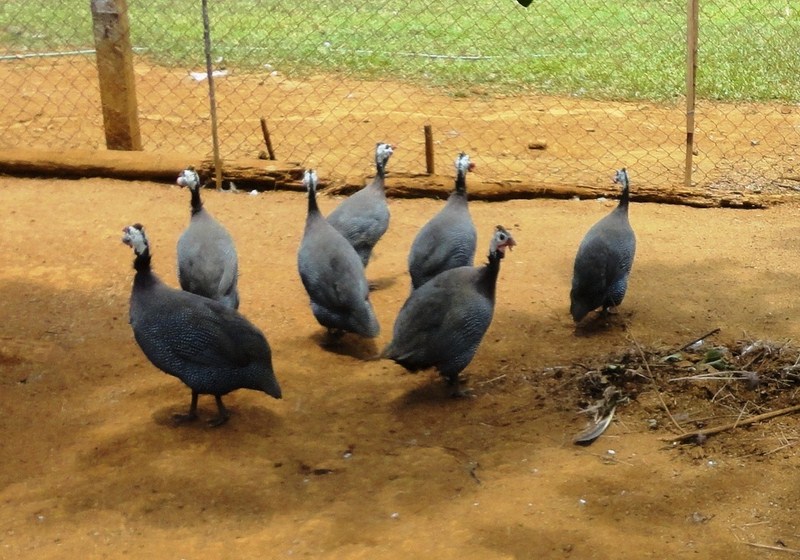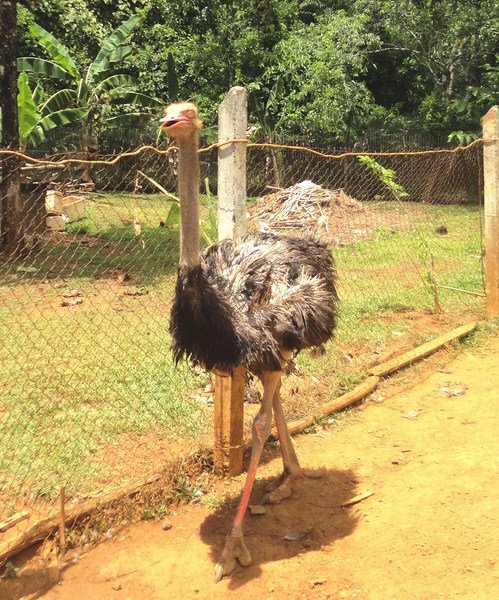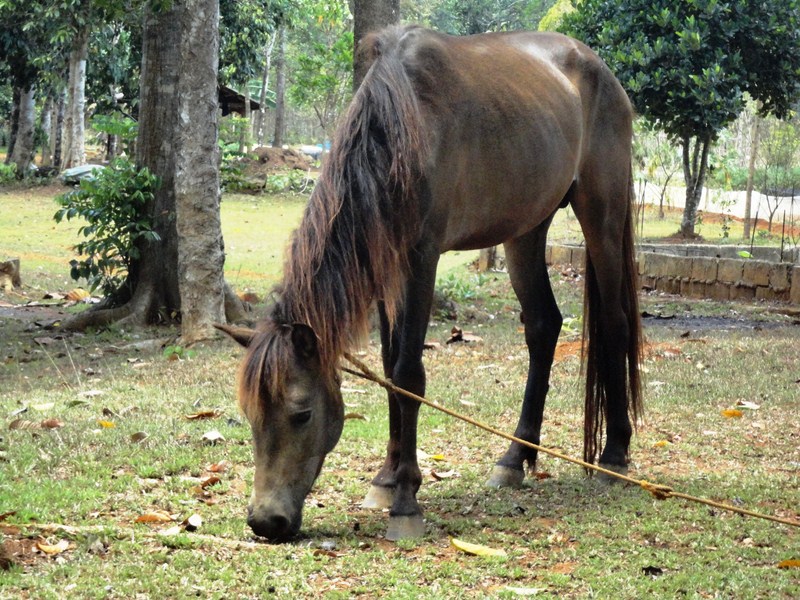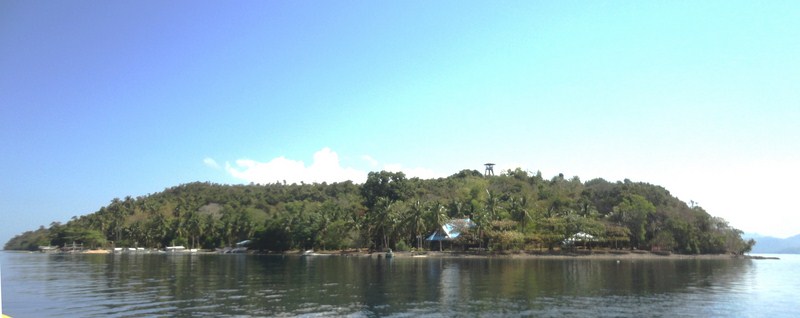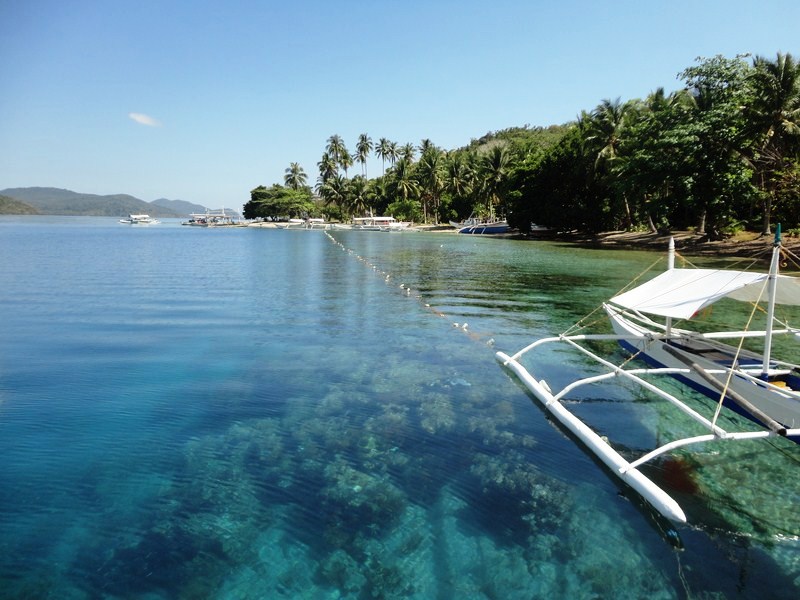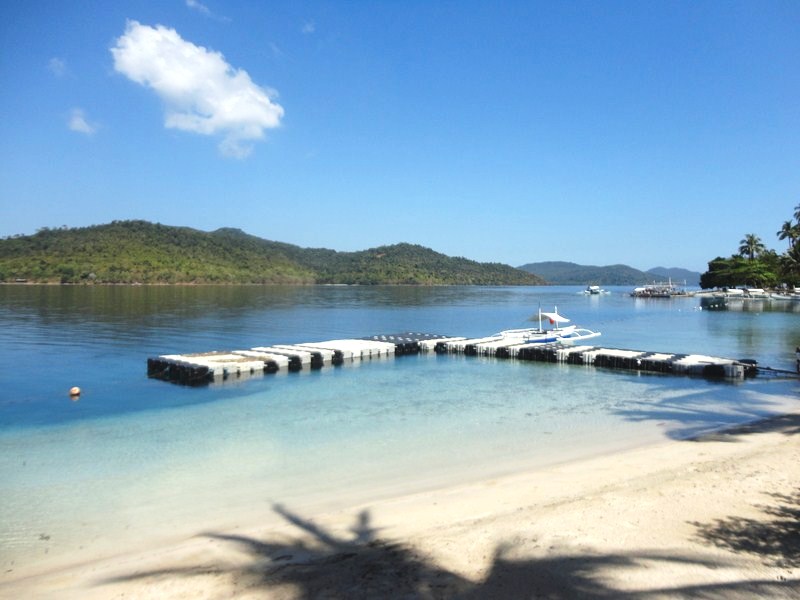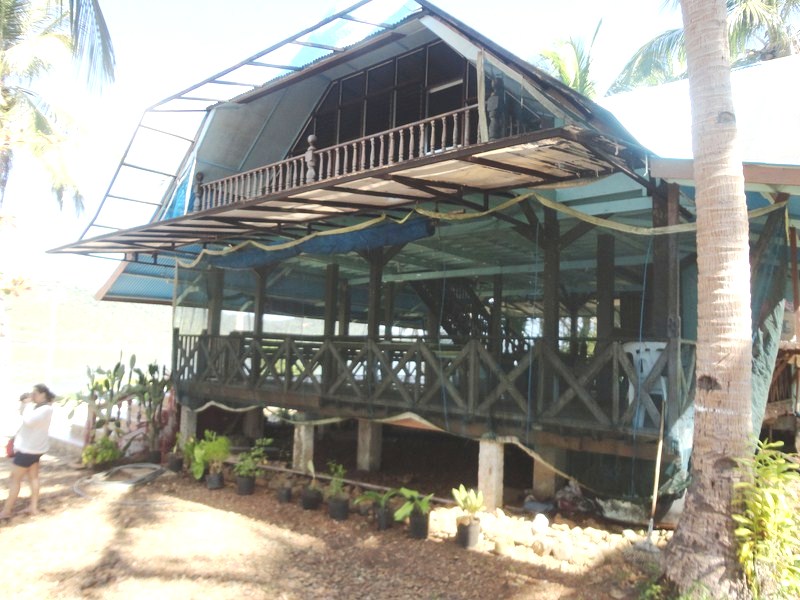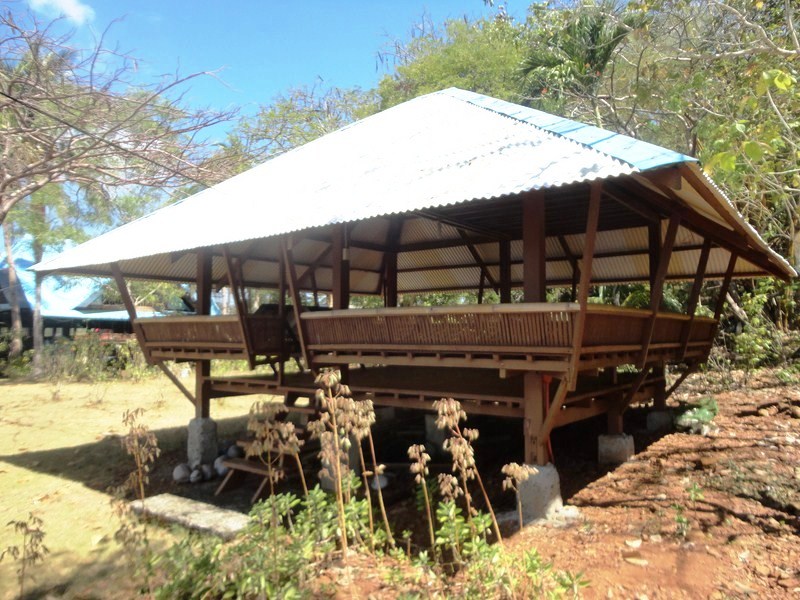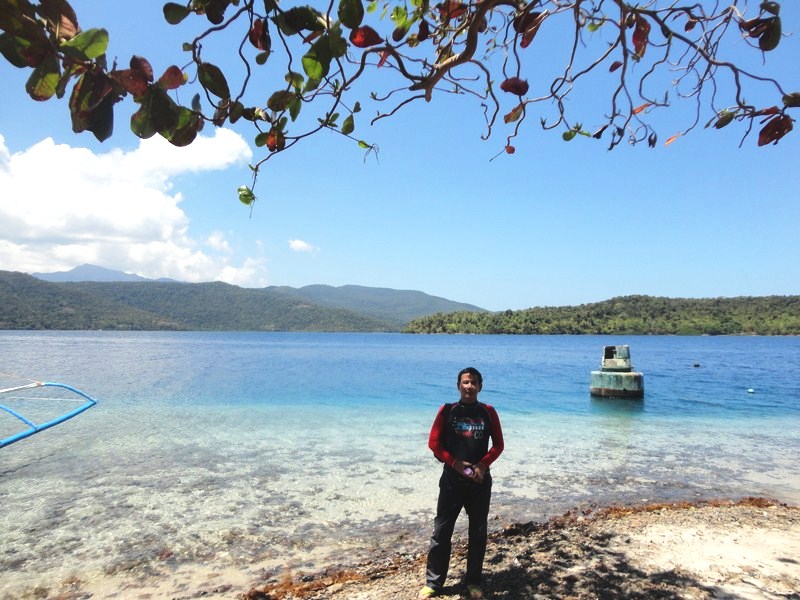Sheridan Beach Resort & Spa Media Tour
After our SabangX Zipline, we were next slated to do the Mangrove Paddle Boat Tour, another activity offered and sponsored by Sheridan Resort & Spa. The mangrove paddleboat cruise offers an educational tour of the mangroves at PhP150 per person. From the zipline landing area, we walked towards the edge of the beach to the mouth of the 4 km. long Sabang River where it flowed out into the West Philippine Sea. At the end of the path, we arrived at Michi’s Cottages where we saw the office for the Mangrove Paddle Boat Tour where we registered our names. We were the last group to avail of the tour.
At the river bank, we boarded a paddle boat made of fiberglass. Joining PJ, Joy, Charmie, Lester and I were Mr. Nestor Elijan, our mangrove paddleboat tour guide, plus a paddler who would propel our boat with an old-style wooden pole that has one broad flat end. For safety purposes, we were each provided and requested to wear standard life vests. As it was already late in the afternoon, we no longer brought along umbrellas to repel heat from the sun. The tour lasts from 45 mins. to 1 hour.
As our boatman started paddling through the brackish but serene river water that reflects the tall mangrove trees and their beautifully intermingled protruding roots, Mang Nestor explained the importance of these century-old mangroves (locally called bakawan, from the Tagbanua tribal word bakhaw) in the marine and forest ecosystems. Palawan contains 43% of the total mangrove forests in the country and Puerto Princesa City is one place where the total area of mangrove forests is increasing and not decreasing.
Mangrove ecosystems like the one in Sabang, breeding grounds to pelagic fishes, also serve as habitats to a collection of mammals, reptiles and amphibians as well. The mangrove forest, a buffer zone between the land and the sea, breaks the waves before it reaches the land and also serves as a blocker for the strong winds during a storm, thus protecting the coast against erosion. Mangroves also filter bad elements of the land such as insecticide and other chemicals and trash. This protects the coral reefs and sea grass beds from being covered by the debris which block sunlight reaching them.
A former park ranger who watched over Sabang’s environs and went after illegal loggers and poachers, Mang Nestor is also a self-taught mangrove scientist who can identify the different kinds of mangroves, along with the scientific names, at a drop of the hat, and tell whether this or that bakawan is male or female through their leaves. A number of mangrove species that can be found here are the Rhizopora apiculata (locally called bakhaw lalaki), Rhizophora mucronata (known as the loop-root mangrove or the red mangrove, it is found on coasts and river banks and Bruguiera gymnorrhiza. Mang Nestor talked about “true mangroves,” those that thrive only in mangrove environments, and “mangrove associates,”those that grow in the periphery of mangrove wetlands. There are also mangrove trees that are parasitic, “swallowing” another mangrove associate, depriving it of its share of sunlight and soil.
Along the way, we got a number of close encounters with sleeping Mangrove Cat Snakes (Boiga dendrophila), a 6 to 8 ft. long, elegant but mildly venomous colubrid snake with black and yellow bands, curled around branches of the overhanging mangrove trees. Mang Nestor told us not to worry, as long as you don’t disturb them they won’t jump. Midway through the tour, our paddle boat passed a makeshift wooden platform with a charming bamboo boardwalk, built over sinuous mangrove roots that led to the bird watching area.
As we followed the river deeper into the forest, the river narrowed and became shallower and the mangroves stood very high above the ground, its natural canopy shielding us from the sun’s mighty reach. Somehow, I felt I was in an Amazon forest. On shallower parts of the river, the water spans wider through the forest grounds where roots of the mangroves grow on.
We saw other mangrove creatures such as a long-tailed macaque, water monitor lizards (Varanus palawanensis, locally called bayawak), mudfish (locally called dalag) and mangrove and cattle egrets. Other mangrove denizens we didn’t see include mudskippers, crabs, oysters, hornbills, ruddy and stork-billed kingfishers, Palawan bearcats (locally called binturong), clawed and clawless otters, pangolin or scaly anteater, mayna, and skunks (locally called pantot).
On our way back, our paddler alighted among the mangroves to look for some driftwood bored by tamilok (shipworm), a marine bivalve mollusk that bores into submerged wood. Back at the receiving area, he hacked open the wood to reveal two small worms (according to Mang Nestor, they sometimes reach a length of 2 ft.). While considered a pest in other countries, the tamilok is a delicacy in these parts and, when dipped fresh in coconut vinegar, are said to taste like oysters. Andrew Zimmern, in one of his episodes in Bizarre Foods, enjoyed eating one of these. However, harvesting the tamilok for commercial purposes isn’t allowed, as this would affect the mangrove’s ecosystem.
Normally, at the end of the tour, visitors are given a chance to contribute to conservation by planting some mangrove saplings in a designated planting area, so that when it becomes a seedling they would move it deep within the forest. The Mangrove Paddleboat Tour, so peaceful and relaxing, was a totally worthwhile experience. I hope that those who visit Sabang to see the Underground River would include the Mangrove Paddleboat Tour in their itinerary.
Mangrove Paddle Boat Tour: Sitio Sabang, Brgy. Cabayugan, Puerto Princesa City, Palawan. Mobile numbers (Mrs. Norma Ortega): (0912) 322-3665 and (0926) 829-3095. E-mail: bingo032374@yahoo.com.
The Mangrove Paddle Boat Tour starts around 8AM to 10AM, depending on the sun’s visibility, as the tour needs light as little sunlight will make the mangrove really dark. The tour still operates during a storm but not during a very strong typhoon. It is best to visit the Mangrove Paddle Boat Tour during low tides as you will see most of the animals, including those that live on the bottom of the water. To protect against annoying mosquitoes, use insect repellent before the tour. They stop touring guests around 4:30PM. The Paddle Boat Tour can be combined with the Sabang X Zipline as both attractions are located very close to each other.
Sheridan Beach Resort & Spa: Sabang Beach, Sitio Sabang, Brgy. Cabayugan. Puerto Princesa City, Palawan. Palawan Sales Office: Jeco Bldg., Rizal Ave. Extn., Puerto Princesa City. Tel (+63 48) 434 1448 to 49 and 723 7278. Mobile Numbers (+63 917) 308-3245 and (+ 63 917) 308-3245. Cebu Sales Office: Sheridan Bldg., Ouano Ave., NRA, Mandaue City. Tel: (+63 32) 236-1001. Fax: (+63 32) 345-1000. Mobile number: (+63 917) 306-6984. Manila Sales Office: tel: (+63 2) 939-8888. Mobile number: (+63 917) 726-5224. E-mail: reservations@sheridanbeachresort.com. Website: www.sheridanbeachresort.com.
Instagram: @sheridanresorts
Instagram official tag: #SheridanPalawan
Twitter: @sheridanresorts
Facebook: facebook.com/sheridanbeachresortandspa

